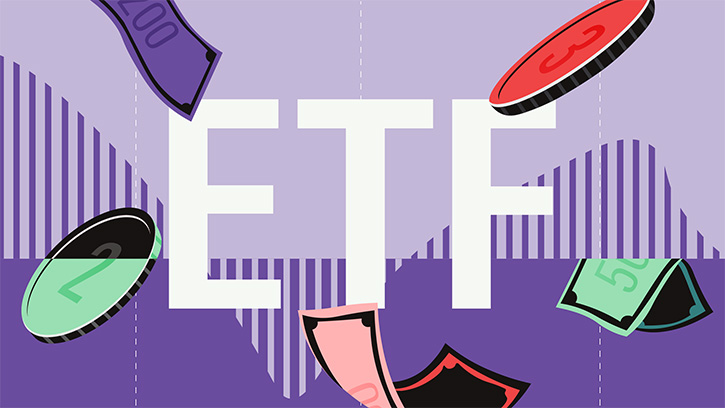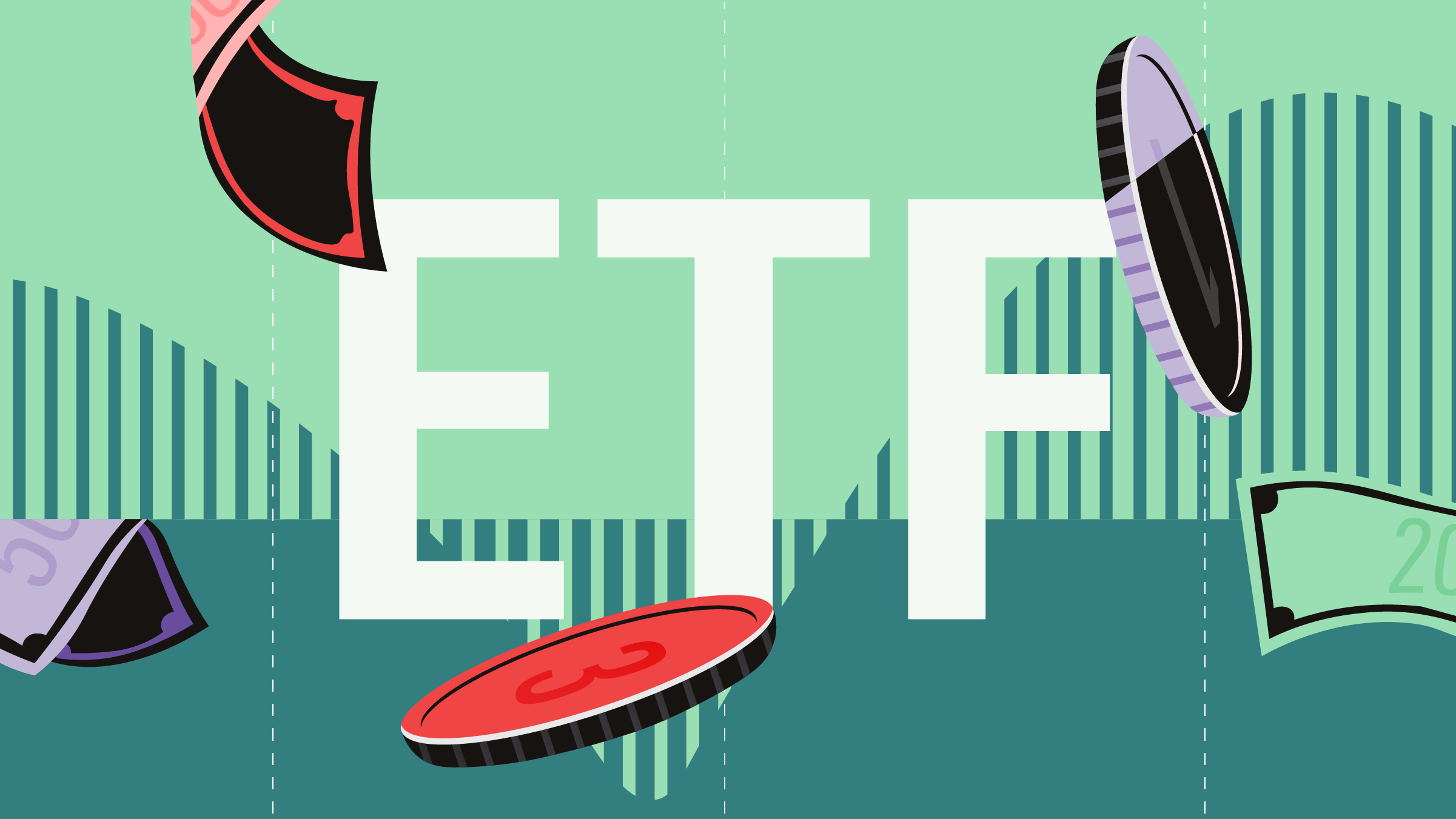Tällä laajalla videolla Street One Financial -yhtiön johtaja Scott Freeze avaa etf-rahastojen kaupankäynnin saloja. Hän käsittelee mm. seuraavia kysymyksiä:-millainen toimeksianto kannattaa jättää? (Freeze suosittelee markkinahintaa likvideille etf:ille ja hintalimitin asettamista vähemmän likvideille rahastoille)
-onko tiedolla rahaston omistusten arvosta (NAV) merkitystä yksityissijoittajalle
-mihin aikaan päivästä kauppaa kannattaa käydä
-tapoja haistella markkinoiden likviteettiä
-kärsivällisyyden merkityksestä
Haastattelijana on Morningstarin rahastoanalyytikko Michael Rawson, CFA.
Mike Rawson: Hi, I'm Mike Rawson with Morningstar.
We are here today talking about ETF trading, and joining me is Scott Freeze. Scott is the President of Street One Financial.
Scott, thanks for joining me.
Scott Freeze: Thanks for having me.
Rawson: When it comes to ETFs versus mutual funds, we all know that the difference, at least the primary difference, is that ETFs are traded on an exchange. Now, that can be an advantage, but it could also quickly turn into disadvantage if you're not careful with what you're doing.
So, let's talk a little bit about ETF trading. Let's start off with limit orders.
Scott, what is a limit order, and why might I want to use a limit order when I'm trading an ETF?
Freeze: A limit order is when you put out a specific price that you want to buy or sell the ETF at. So, instead of just saying "market," where you could just get whatever the next offer is or whatever that price will get filled at, with a limit order, you're specifying, I will pay no more than this or I will sell it at no less than this price.
Rawson: Some people say that you should always use limit orders with ETFs. But let's say I am an average investor, and I'm just going to put $10,000 into something that's very liquid--maybe a core portfolio type of ETF. Do I need to use a limit order on something that's as liquid as maybe the SPDR S&P 500 ETF, SPY?
Freeze: Probably not. Something like the SPY, at $10,000 worth, it's going to be millions of shares up at each price point, and it's only a penny wide. So, you can sell it at $0.63, you can buy it at $0.64. If you hit market for $10,000 worth, you're going to get filled on the bid or on the offer, depending on what side of the market you're on.
Limit orders really don't come into play until you're talking about more esoteric, thinly traded ETFs. Maybe if it has a wider spread, say $0.05 or more. If it's something that trades 400 shares a day, 2,000 shares a day, then you might want to start looking at limit orders, just so that you don't have any adverse price impact, because I'm sure a number of your viewers have seen where they hit sell, it's a market order, the ETF is trading in a flat line, they get filled down here, and it comes right back up, and they become that T in the chart. It's just because the market order wasn't appropriate there; they could have been filled right on the flat line if they would have just had a limit order out there.
Rawson: OK. So, you mentioned a big price deviation where the price drops and maybe comes right back. When we trade in an ETF, do we need to be aware of the net asset value of the underlying fund? Is that something that you look at?
Freeze: It's a good starting point. If you're talking about U.S. domestic equity ETFs, then you could always look at the indicative value, which is the IIV, and you can get it off of many of the websites. That will give you every 20 seconds what the underlying basket of the ETFs is, because remember an ETF is a mutual fund, it's just traded on an exchanges. So, say we're talking about the S&P 500, there are 500 different names in that ETF, and you're in essence just taking your $10,000 and rationing it out between those 500 stocks. So, there will be minimal price movement, but you can see what that basket is priced at.
If you're talking about commodity ETFs or foreign ETFs where the markets are closed, then that's going to be a stale number, same as with fixed income.
Fixed-income will be priced off of last night's close, and different ETF companies will price the basket differently. Some will price it at last night's bid; some will price it at last price. Foreign--say you're trading in China, India, Asia, frontier markets any of those--those markets are closed, so that number is going to be stale. It's going to be based on where the underlying securities were last priced.
So, for U.S. domestic equities, yes, look at the IIV, and you'll have a good idea where it's trading. If it's a foreign ETF, a fixed-income ETF, or some of the commodity ETFs, it gives you good idea of where that basket should be, but it's not going to be 100% accurate.
Rawson: You mention with these foreign ETFs or maybe fixed-income ETFs that you're not going to have a truly accurate NAV, so that's where you might see a premium or discount in the ETF, and sometimes it's unavoidable. Is that correct?
Freeze: Right. So, just because it's trading at a premium doesn't mean you should necessarily sell it. It's not like a closed-end fund, where you can see in real-time where the underlying components are. If you're trading something like FXI or FXP, some of the Chinese ETFs, those markets are always closed while you're trading on the New York Stock Exchange or on the Nasdaq. So, that's always going to be a stale number. So, if you see a 9% premium, it doesn't mean you should sell it. It just means the next day, those stocks will be opening significantly higher.
Rawson: Sure. Now, ETF investors are particularly sensitive to what happened during the flash crash when a lot of ETFs sold off, trading at irrational and erratic prices. Are there extra cautions that ETF investors should take, and have there have been any kind of safeguards put in place in the market to prevent that sort of thing from happening again?
Freeze: Well,I mean the safeguards in the marketplace are that we have the circuit breakers that are in there. It was a stock by stock basis, and remember, an ETF is made up of stocks. So, when Johnson & Johnson got crushed, every ETF that held Johnson & Johnson was going to dragged down with it. So it's kind of a chicken or the egg scenario. Did the ETFs cause the flash clash, or was it those few stocks that have been identified as having glitches or technical problems that caused the ETF prices to then fall dramatically?
Rawson: Some people have said you should avoid trading ETFs right at the market open, or particularly when volatility just spikes. Is that something that you would agree with?
Freeze: There is definitely a right time and a wrong time to trade every product. ETFs are very simple. During the open and the close, you have underlying components that may not be open yet. If you're buying on the open or selling on the open, not every stock opens right at 9:30. Sometimes it's 9:31, sometimes it's 9:32. It's only the over-the-counters that open right at 9:30 and close right at 16:00.
So, if you can wait an extra 5 minutes or 10 minutes at the beginning of the day just for all of the balancing out to occur, then you'll get a very true and accurate price of where that underlying basket is, and the same thing if you're trading foreigns or if you're trading fixed-incomes, trade while those markets are open. If you're trading European ETFs, trade them before 11:30 in the morning or 11 o'clock in the morning. If you're trading fixed income, try not to trade them at 3:30 or 4 o'clock at the end of the day. Trade when the underlying secretaries are opening, to get the most accurate, most transparent pricing.
Rawson: Does it have something to do with the ability of counterparties to hedge?
Freeze: It does. It's absolutely 100% being able to hedge, and also being able to do creations and redemptions, and being able to actually trade the underlying securities.
Rawson: Now, with stocks you have a limit order book and they kind of give you an indication of how much liquidity there is out there. Does it work the same way with ETFs? Is there a limit-order book, and can I trust that to kind of gauge liquidity?
Freeze: It's a good framework for gauging liquidity. It works the exact same way as a stock does. You can look at the depth of book and see how many shares are available at each price point. The difference with ETFs are, you have so many high-frequency trading firms, market makers, and authorized participants that are out there--they don't always show all their size. So if you trade with a limit order, you can probably say there are 10,000 shares being shown on the offer. You might be able to do 100,000 shares at that price point. You might be able to do 50,000 shares at that price point. It's not always going to be shown, but there is a lot of people that will stand out there and just--almost like an arbitrage play--they want to keep the price balanced. So while it's shown on the screen, the entire size of the order, you know that there is a minimum you can get done, but assume that you can always get more than that.
Rawson: I have heard that sometimes it pays to be patient--not to try to rush through a larger order that might sweep the order book. Is that something you recommend to your investors-- be patient, maybe hold off a bit if you are trading a large size?
Freeze: Large size for ETFs, and remember ETFs are a little different. When you buy a mutual fund, you do it at the end of the day, and you just get the one price. ETFs, you can do the same way, you can buy your entire chunk at one time, but you're going to need to go through the creation and redemption process … where you are going to have to work with the trading firm to be able to do that.
They'll do the entire basket, tell you exactly where it's priced out, and then they'll fill you at that price. That might be $0.02 or $0.03 up from the current offer. It might be $0.02 or $0.03 down from the current bid. It might be in between the MBBO if it's something that has a wider spread.
But if you have time, if you're buying in a downward trended market, wherever you do it, creation, five minutes later that's going to be a bad price because the market is moving down. So, if you can be patient, and maybe latter some bids out there and be at different price points, or just take your time and say, I'll accept some partial fills right now, assuming that at the end of the day, you can just go out to the offer for the rest of the order, or just wait to see if it fills in as the market trades, that's probably the best scenario.
Rawson: Well, for someone who has a large ETF trade to make, let's say they are a registered investment advisor or a financial advisor, why might it be to their advantage to pick up the phone and call a firm like Street One Financial. What kind of services are you going to offer?
Freeze: The big difference with Street One Financial from going through their custodian desk is that we'll go out and we have a liquidity network. So all the APs and market markers that are in the ETF space, we have relationships with them. So, if somebody wants to buy 200,000 shares of say, PHO, which is a thinly traded infrastructure ETF, we can go out to everybody in our network and say, where can I do 200,000. We don't even need to know the size. So it might be one firm will show the highest bid and the lowest offer, so it might be one firm showing the highest bid, a different firm showing the lowest offer.
We'll show that to the customer. They can decide, I want to sell it here or I want to buy it here. Then we just fill them through whatever counterparty was on the inside for their trade. If they did it themselves, and they went directly through the custodian or they went to one or two different firms, they may be getting a price that's $0.10, $0.05 away from what we could offer because we have a larger network.
Rawson: I see. Well, Scott, thank you for those insights.
Freeze: Thank you.
Rawson: For Morningstar, I'm Mike Rawson.





















